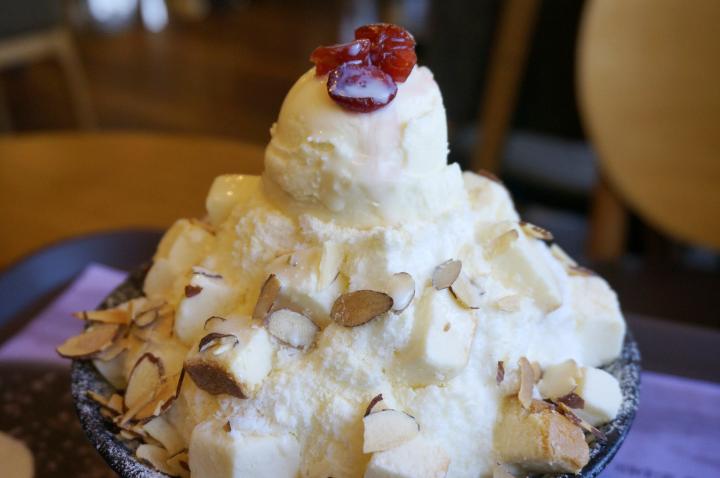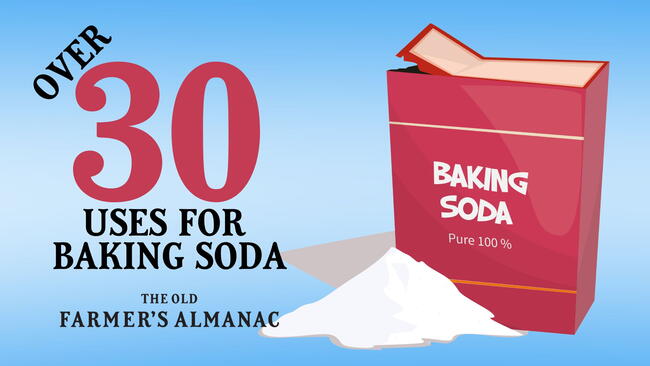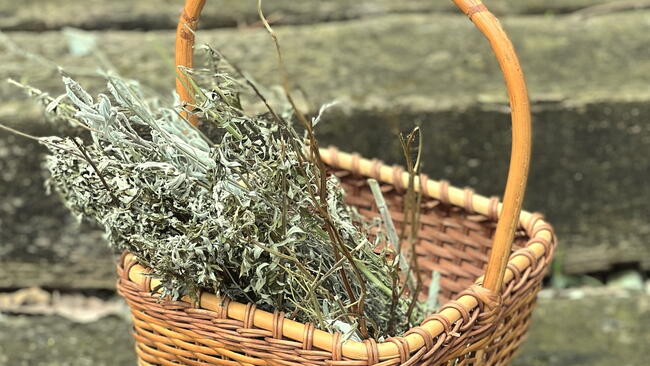If winter means snow where you live, here’s some good news: Just as autumn leaves have their purpose, winter snow has many uses in our daily lives! From watering houseplants to reducing inflammation to making better pancakes, see the many uses for snow in the home and garden.
Whatever you think of snow, it adds a whole other dimension to our lives! I’ll get a lot of exercise today shoveling pathways and deicing the driveway. Then comes snowshoeing in the adjacent woods—more exercising and healthy living amidst the peace and beauty of nature.
Plus, snow and ice also have many household uses. If you don’t have any just outside your kitchen door, use cubed or crushed ice from your freezer.
Cooking With Snow
- Make maple sugar on snow. Growing up in Vermont in a family with many farmer relatives, every spring I sampled the world’s most fabulous candy. Anyone can make it. Collect clean, fresh snow and pack it hard into small bowls. Leave it outdoors until you’re ready. Boil some maple syrup (or honey) until a bit of it dribbled into cold water forms a ball you can lift out with your fingers. Drizzle onto the bowl of snow, where the syrup will harden into a soft maple leather. Pull it off, pop it into your mouth. It’s a chewy, toffee-like treat!
- Make snow cream. Many parts of the nation consider this mixture of fresh snow, sugar, milk (cream, evaporated milk, or half-and-half) and vanilla a winter treat. I’ve tasted it but never made it myself. If you do make it, work fast or make it outside just before serving to keep your snow cream cold. Here’s a variation that adds frozen strawberries.

- Thicken a salad dressing. Throw a chunk of ice into your oil-and-vinegar dressing, shake, then remove the ice. The ice will form a thick emulsion, allowing the dressing to distribute itself evenly over your salad without separating.
- Fluff up rice or other grain dishes when reheating. If you’re reheating leftover rice or other grain dish, toss a couple of ice cubes or a small ball of fresh snow into the dish before microwaving.
- Lighten your pancakes. Fold a cup of snow into pancake batter directly before adding it to the pan. The water and air content will give your flapjacks a lighter texture.
- Do dishes. If you’re outside camping, use a handful of fresh snow to scrub pots and pans clean.
- Keep your beer cold! Yep, snow’s great for keeping your drinks cold.
Medical Uses for Snow
Warning: To avoid skin damage, don’t apply ice directly to a burn, wound, or sprain.
- Reduce swelling and inflammation. Compress snow and apply it to injuries to calm inflammation. Wrap the snow in a towel or bandana to prevent direct contact with the cold, which could damage tissues. Five or 10 minutes is long enough to ice.
- Treat a burn. Treat minor burns using ice or snow to cool a bowl of water, then wrap a towel that’s been soaked in cold water around the affected area. Seek medical care if the burn is severe or blistered or your skin is broken. Don’t apply ice or snow directly to the burn.
- Cool pizza-mouth. Ouch! There’s nothing like the searing pain of scorching the roof of your mouth with a piece of hot pizza. When you feel the burn, feeding yourself a few teaspoons of fresh, clean snow will help ease the sting and may prevent blistering.
- Get comfortably numb. Rub a ball of snow or a chunk of ice over the area before plucking eyebrows or removing a splinter to numb the pain.
Around the House
- Remove stuck-on chewing gum. Just rub an ice cube over the gum to stiffen it so it will flake or pull off. Inside the clothes dryer, wait for the dryer to cool down, then rub the area with ice sealed in a small baggie. Scrape off the hardened gum with a soft plastic scrubber and remove remaining scum with a cloth wet with white vinegar.
- Remove dents from carpets and rugs. Let an ice cube (or several cubes, as needed) melt in the depression caused by the weight of a furniture leg (or other heavy object). Then, fluff up the pile of the rug and let the treated area air-dry.
- Clean narrow-necked bottles or vases. Add a small handful of kosher salt and a few tablespoons of lemon juice or white vinegar to a cup of crushed ice. Swish and shake the mixture around inside the item and its neck for a minute or two.
Outdoor Uses
Snow is an insulator that keeps plants and even water from freezing! If you buried a pot full of water in the snow (with 2 feet on either side), it would not freeze by morning!
Seriously, snow is great for gardens; don’t remove it. We call it “poor man’s fertilizer.” Soil that’s insulated by a blanket of snow can stay close to 32°F even when the air temperature plunges below zero. In a brief winter warm spell, snow’s insulation works the other way: It can keep the soil from warming up so plants aren’t tricked into sprouting too soon.
Snow protects plants from drying winter winds, especially semi-hardy plants such as bigleaf hydrangeas. In spring, melting snow provides moisture to plants’ roots as the plants are coming out of dormancy; nature has perfect timing!
Now that most of us understand plants’ survival skills, if you were to find yourself outdoors in a storm, snow’s fluffy, high air content (up to 95 percent by volume) makes it an excellent insulator. Dig a trench or carve a snow cave!
And snow can keep us humans hydrated, too. Just don’t eat any yellow snow!












Comments